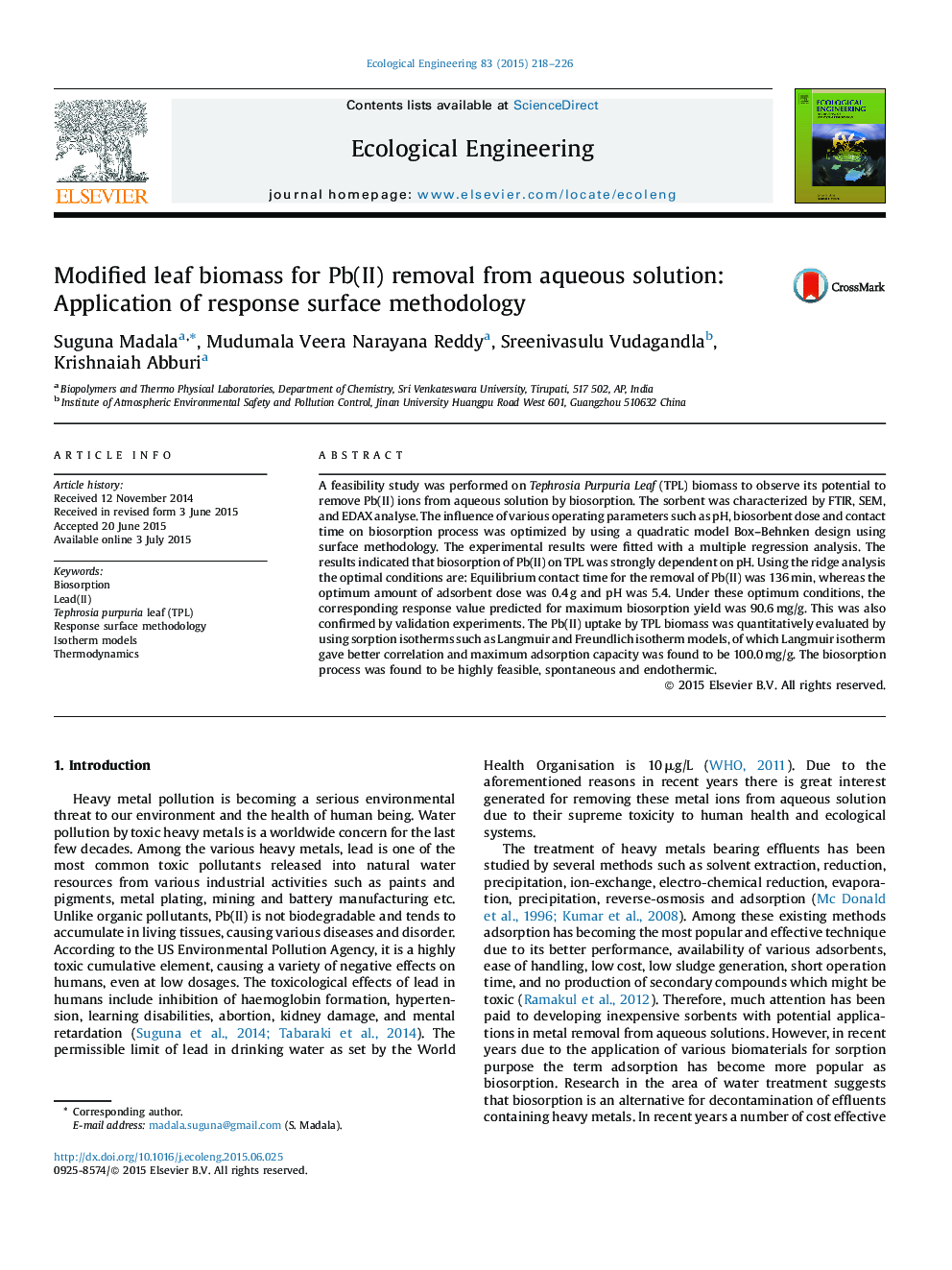| کد مقاله | کد نشریه | سال انتشار | مقاله انگلیسی | نسخه تمام متن |
|---|---|---|---|---|
| 4388869 | 1618016 | 2015 | 9 صفحه PDF | دانلود رایگان |

• Removal of Pb(II) ions from aqueous solution was studied by using pretreated Tephrosia purpurea leaf powder.
• The pretreated biosorbent was characterized by FTIR, SEM and EDAX.
• Response surface methodology was employed to optimize the experimental parameters by using Box–Behnken experimental design.
• Thermodynamic studies indicated that adsorption process was spontaneous and endothermic.
• Ridge and canonical analysis gave exact optimum conditions for the removal of Pb(II).
A feasibility study was performed on Tephrosia Purpuria Leaf (TPL) biomass to observe its potential to remove Pb(II) ions from aqueous solution by biosorption. The sorbent was characterized by FTIR, SEM, and EDAX analyse. The influence of various operating parameters such as pH, biosorbent dose and contact time on biosorption process was optimized by using a quadratic model Box–Behnken design using surface methodology. The experimental results were fitted with a multiple regression analysis. The results indicated that biosorption of Pb(II) on TPL was strongly dependent on pH. Using the ridge analysis the optimal conditions are: Equilibrium contact time for the removal of Pb(II) was 136 min, whereas the optimum amount of adsorbent dose was 0.4 g and pH was 5.4. Under these optimum conditions, the corresponding response value predicted for maximum biosorption yield was 90.6 mg/g. This was also confirmed by validation experiments. The Pb(II) uptake by TPL biomass was quantitatively evaluated by using sorption isotherms such as Langmuir and Freundlich isotherm models, of which Langmuir isotherm gave better correlation and maximum adsorption capacity was found to be 100.0 mg/g. The biosorption process was found to be highly feasible, spontaneous and endothermic.
Figure optionsDownload as PowerPoint slide
Journal: Ecological Engineering - Volume 83, October 2015, Pages 218–226